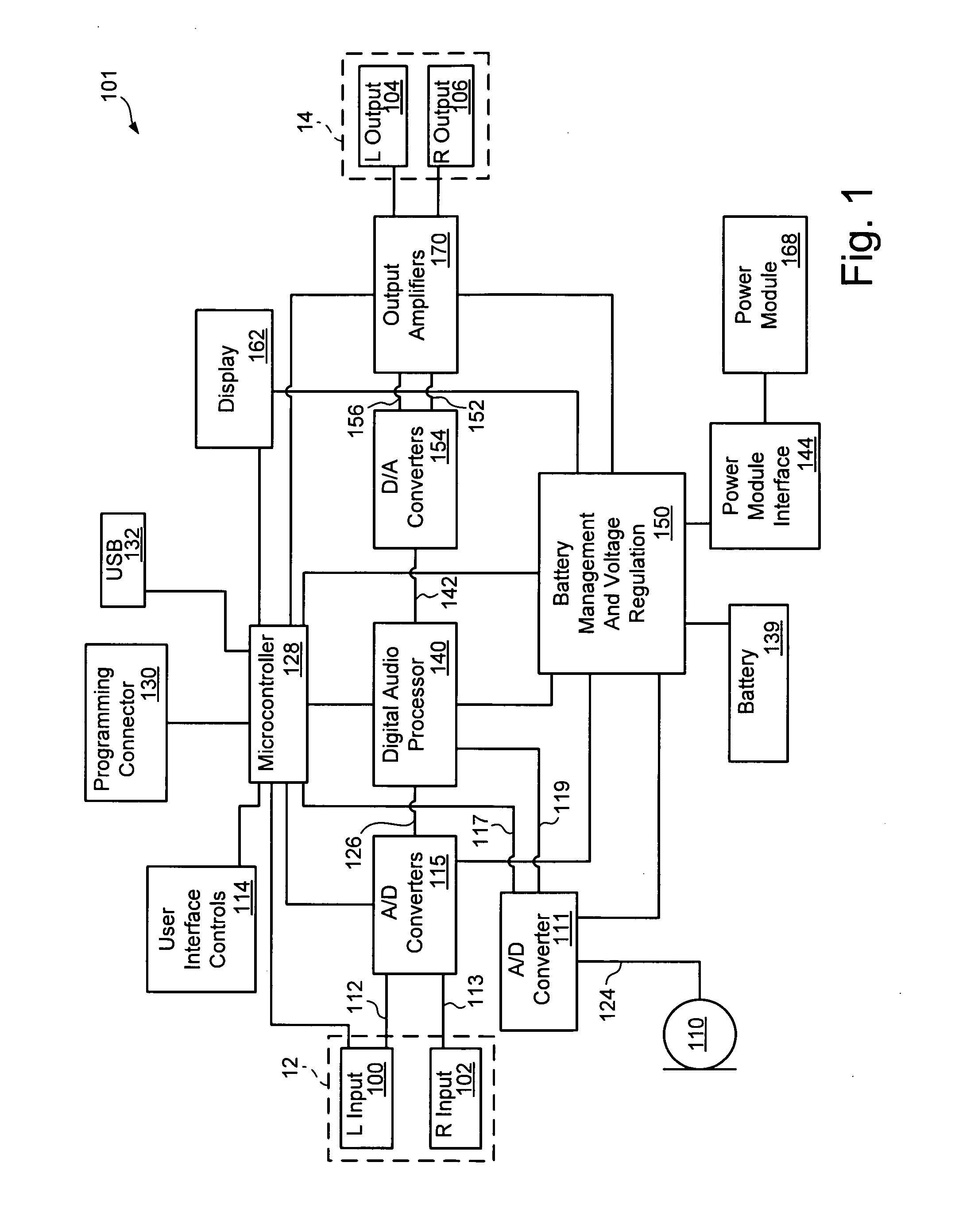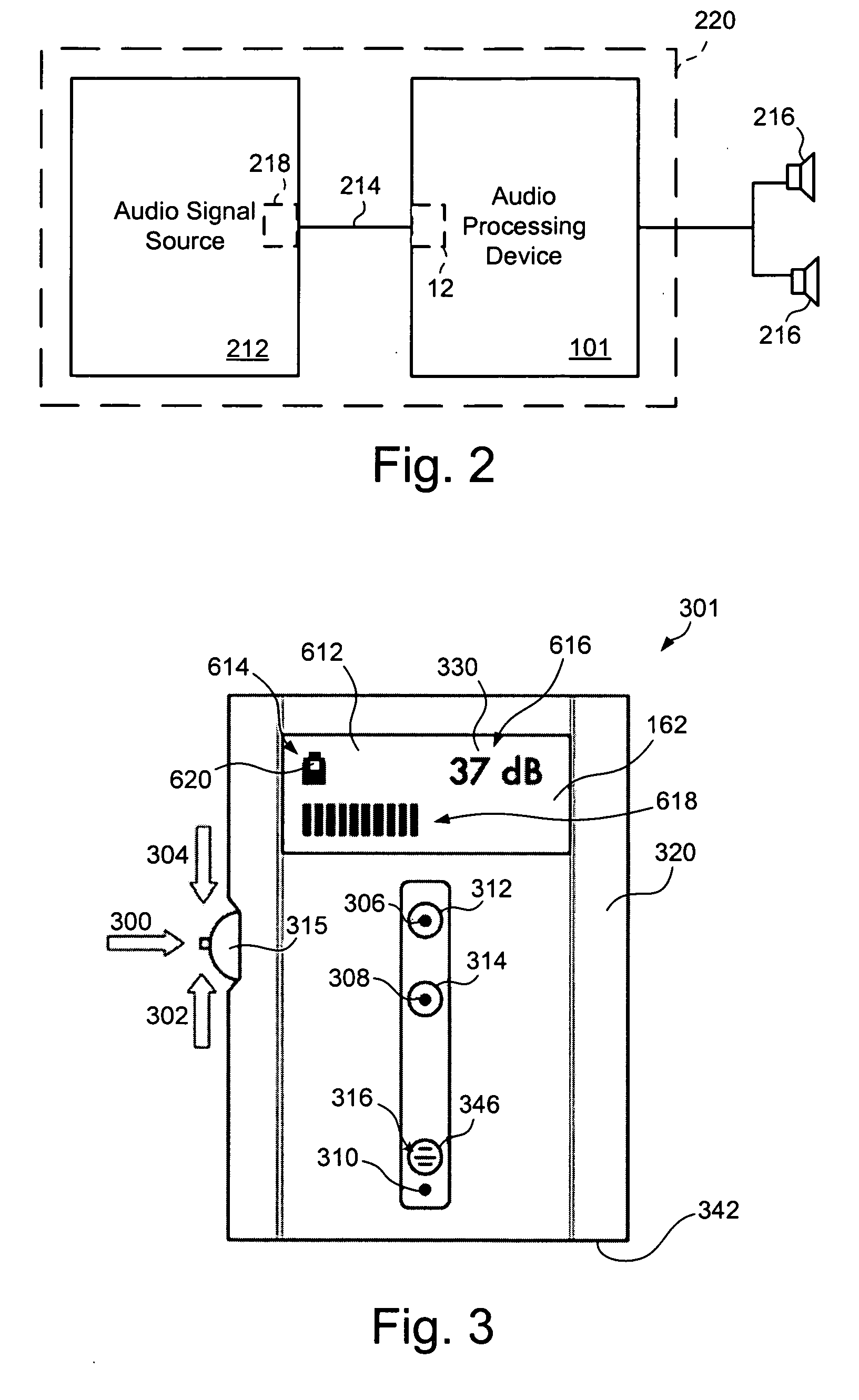Digital audio processor device and method
a digital audio and processor technology, applied in the direction of transducer details, signal processing, stereophonic circuit arrangement, etc., can solve the problems of ten million americans suffering irreversible noise-induced hearing loss, 30 million more are exposed to dangerous sound levels, and dangerous sound levels are earphones and headphones. to achieve the effect of calibrating the sensitivity and/or frequency response of a user's earphones
- Summary
- Abstract
- Description
- Claims
- Application Information
AI Technical Summary
Benefits of technology
Problems solved by technology
Method used
Image
Examples
Embodiment Construction
[0025]The following descriptions of detailed embodiments are for exemplifying the principles and advantages of the inventions claimed herein. They are not to be taken in any way as limitations on the scope of the inventions.
[0026]Turning to FIG. 1, a general functional block diagram is provided of an embodiment of a digital audio processor device 101 in accordance with the present invention. It should be appreciated that the functional blocks of FIG. 1 can be realized by any number of hardware and / or software components configured to perform the specified functions described herein. For example, the present invention can employ various integrated circuit components, e.g., memory elements, processing elements, logic elements, look-up tables, and the like, which can carry out a variety of functions under the control of one or more microprocessors or other control devices. Moreover, it should be appreciated that the interconnecting lines in FIG. 1 can be realized by any number of elect...
PUM
 Login to View More
Login to View More Abstract
Description
Claims
Application Information
 Login to View More
Login to View More - R&D
- Intellectual Property
- Life Sciences
- Materials
- Tech Scout
- Unparalleled Data Quality
- Higher Quality Content
- 60% Fewer Hallucinations
Browse by: Latest US Patents, China's latest patents, Technical Efficacy Thesaurus, Application Domain, Technology Topic, Popular Technical Reports.
© 2025 PatSnap. All rights reserved.Legal|Privacy policy|Modern Slavery Act Transparency Statement|Sitemap|About US| Contact US: help@patsnap.com



